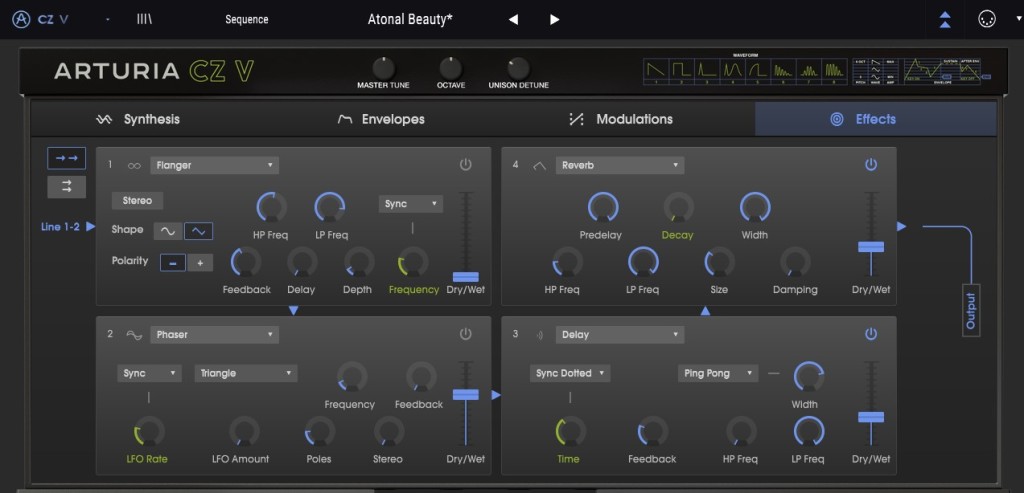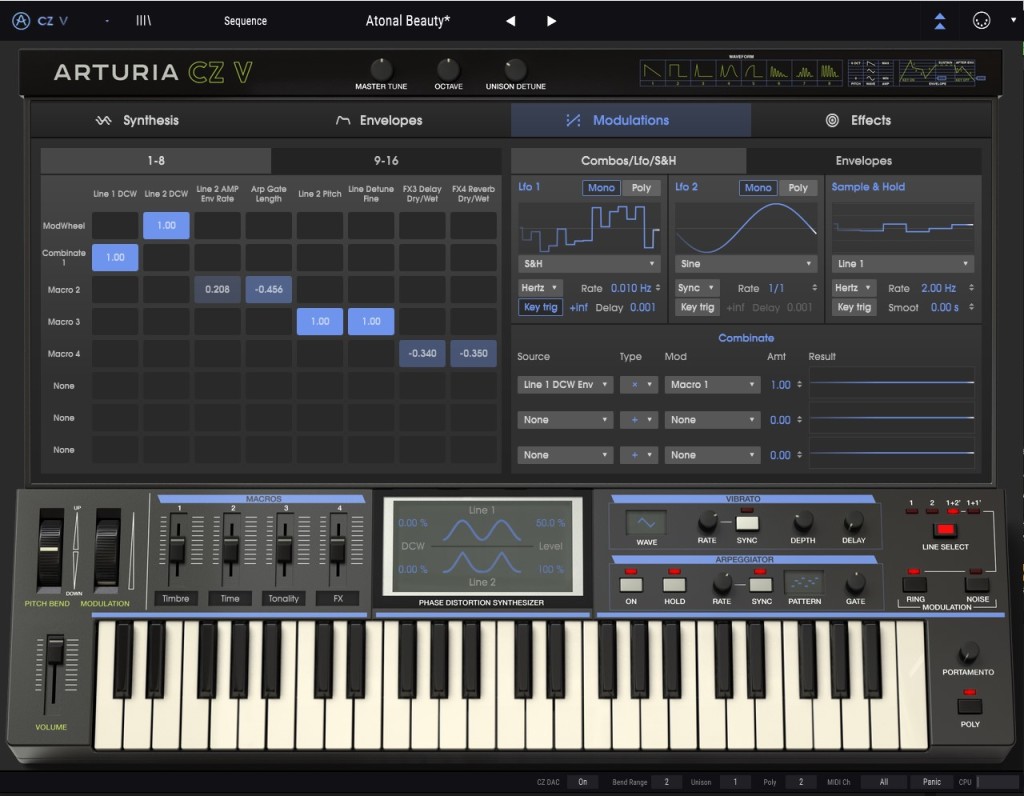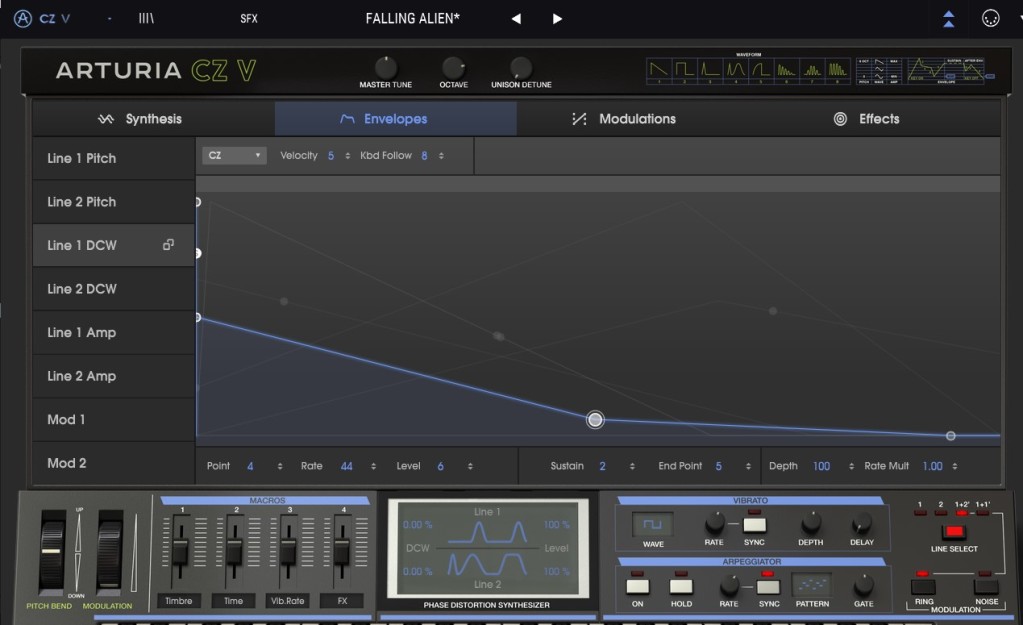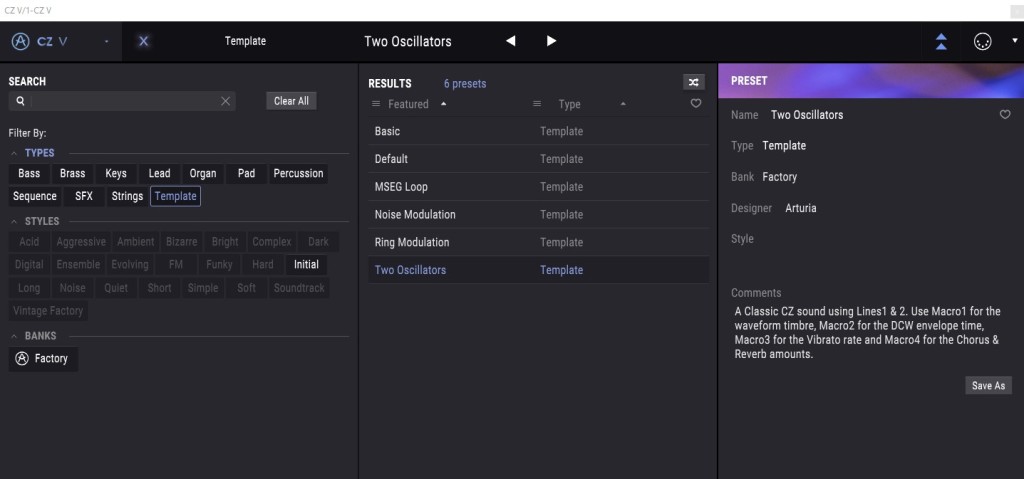Arturia’s V Collection 7 continues to expand as the go-to software library of every vintage synth you would ever want. But let’s focus on one new gem: the brilliant CZ-101 remake.
First off, V Collection 7 is worth a look. Arturia keep making their mega-bundle software instrument bundle better. That means both reworking the modeling inside these tools, and adding new features, as well as – of course – continuing to expand the library of available instruments. As modeling has improved, these instruments have gotten more and more like the originals in sound and not just in function and look. At the same time, Arturia keeps beefing up those originals with new features – so the authentic sound engines get new sound design features atop them.
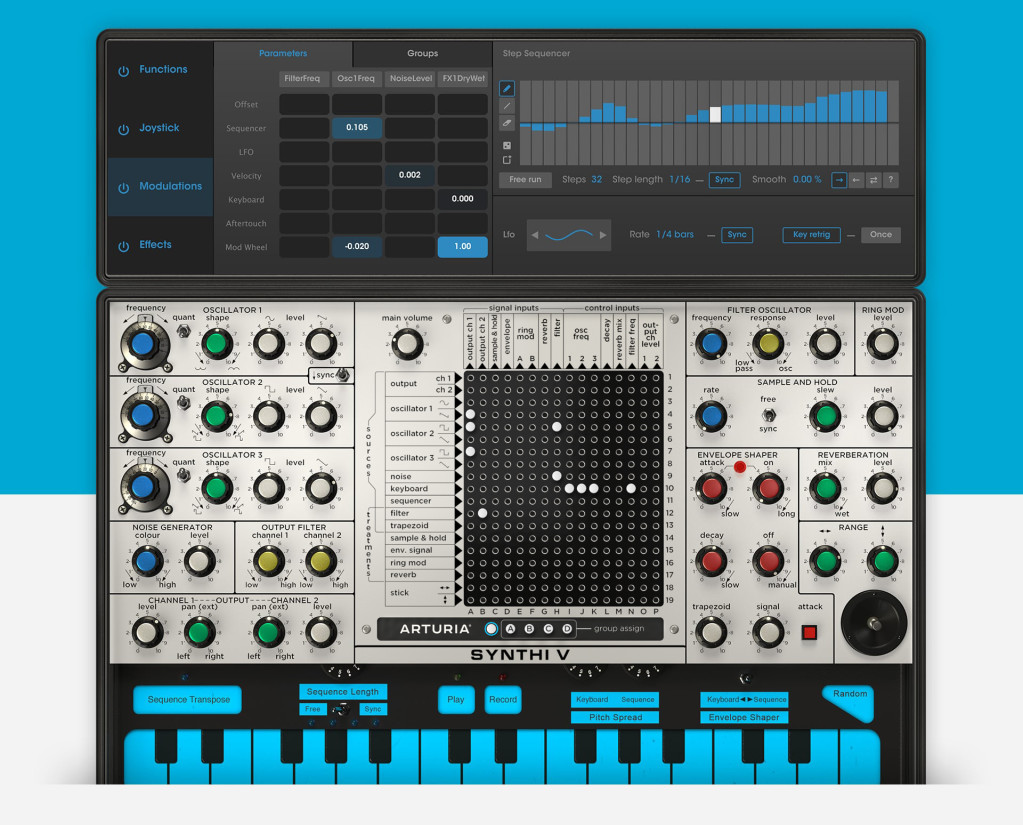
The EMS Synthi V makes an appearance in the new V Collection, too – if your tastes go more 70s than 80s. And it’s a big deal.
Version 7 continues to balance the desires of the casual keyboardist and the obsessive synth sound designer – and everything in between. So if you just want to add a convincing Mellotron or B-3, you’re covered – with an all-new Mellotron and a total ground-up sound engine overhaul for the B-3 V2. Jimmy Smith Strawberry Fields Forever, check and mate.
If the idea of a whole bunch of unfamiliar keyboards and control layouts is unappealing, V Collection 7 also includes the new Analog Lab 4, which consolidates all these things into easy presets and macro controls, and hundreds of new presets in their “Synthopedia.” That way if you do want to look up the way a familiar sound was produced – then tweak it yourself – you can.
Of course, if you read CDM, your favorite preset may be “default template,” and the idea of getting lost for hours in a vintage synth control layout may be the whole selling point. For that crowd, the V Collection 7 adds the EMI Synthi V and the CZ-101 from Casio, circa 1985.

Photo (CC-BY-SA) Neil Vance, via WikiCommons.
The ability to just dial up a menu and say, “do I want an Oberheim SEM or a CS-80” is already pretty crazy, and the number of choices continues to grow. So my approach to V Collection is actually to ignore all those presets – apologies, dear sound designer friends – and try to focus on one instrument. It’s a bit like what you do in a packed studio – you pull out one piece of gear, and say, hey, tonight is going to be about me and this instrument and very little else.
I want to talk about the CZ-101 because it’s long been one of my favorite instruments, and it’s a fairly unsung one. The CZ is somehow too easy, too friendly, too compact, too inexpensive to have the kind of adoration of some of the other 80s and 70s throwbacks. It’s not a collectors’ item. You can still find them at flea makrets. So yeah, Arturia are quick to drop names who have used it, like Salt-N-Pepa and Vince Clarke. But to me the whole appeal of the CZ-101 is that it’s for people who love synths, not people trying to emulate their heroes.
Of course, you could for these reasons go get an actual CZ-101. That means Arturia has to sweeten the deal a bit so the software can compete. They did just that. Let’s dive in.

CZ V reproduces the simple hardware interface (at bottom) but also expands to this view with lots of additional visual feedback and features, at top.
Phase Distortion lovers, rejoice
The original CZ-101 is about two things: a simple front panel layout, and phase distortion. If you just want to drop the CZ into a session as-is, CZ V does that.
Phase distortion synthesis isn’t so much a different synthesis method as it is a compelling way of mucking about with two digital oscillators. It’s easy enough to dismiss PD as Casio’s cheaper, non-patented answer to Yamaha’s DX7 and frequency modulation (FM). But now as we grow more accustomed to digital, non-harmonic timbres, PD is better appreciated on its own terms – as a way of producing unique digital color.
In short, what phase distortion does for you is to add rich harmonic content to sound. It can be a distortion. It can sound something like a resonant filter – in its own way. And because it’s normally using synced oscillators – here’s the important bit – it’s way easier to control than FM generally is.
On the Casio, this allows some unique filtering and sound shaping and distortion sounds that can easily be controlled by macros. And on the Arturia remake, graphical access to envelopes and expanded power means that you can use that shaping creatively.
The CZ V kind of goes a bit nuts versus what an original CZ-101 would give you. Let’s compare 1985 and 2019.
The original oscillators are there – sine, saw, square, pulse, resonance, double-sine, saw-pulse – as are the 8-stage envelope generators and vibrato and LFOs. You can even import SysEx from the original. But being able to program these features on a display makes sound design accessible.
In addition to making hidden CZ features more visible, Arturia have expanded what’s possible:
- 32-voice polyphony (the original had just 8).
- A modulation matrix – no, really.
- More modulation: a Sample and Hold module, 2 LFOs with 6 waveforms, 3 sources combinators and an Arpeggiator
- New effects – while an authentic approach to the CZ might leave it dry, now you get all the Arturia multi-effects (adding things like chorus and reverb sound especially nice, for instance)
There’s visual feedback for everything, too.
Where the CZ fits in
In some ways, the CZ-101 is weirdly going from dated 80s thrift store find to … ahead of its time? After all, we’re seeing modular makers embrace these kinds of digital oscillator effects, and phase and phase distortion even inspired the upcoming sequel to Native Instruments’ Massive, the new Massive X.
The CZ architecture is uniquely suited to making a lot of different sounds – including percussion and modulating timbres and edgy digital business – with a minimum of resources. So there’s a noise source built-in. You can modulate with the noise source. There’s ring modulation.
Using the CZ, DADSR, and multi-segment envelopes, you can them sculpt those percussive and metallic timbres over time – including using the DCW (Digitally Controlled Waveform) envelope that morphs between a sine wave and distorted wave.
The reason I’m using the CZ V to talk about the new V Collection edition, though, is that it’s an instrument where it feels like Arturia’s authentic side matches up with the “vintage on steroids” additions. So, by the time you have something like the new Synthi, you’re already presented with tons of sound design possibilities. Arturia has added some amazing ideas there – a step sequencer, a beat-synced LFO, plus onboard effects, atop all the new graphical options for working with envelopes and modulation.
The thing is, on a Synthi, that starts to feel like too much. I almost was tempted with the Synthi to force myself not to expand the tab full of new stuff. If I want an open-ended sound environment on a computer, I can use Reaktor, not try to recreate a 1970s take on the idea.
On the Arturia edition of the Casio, though, all these additions help the CZ graduate from fun toy to serious sound design tool. The visual envelopes make more sense. Effects are something most CZ owners invested in anyway. And more polyphony means you can run one instance and do a lot with it. Heck, even the matrix is easier to follow than on the original EMS Synthi because the architecture of the CZ-101 is so straightforward. In other words, because the original did less, it’s both a good match for software remake and for some thoughtful additions – which Arturia delivers.
Here’s a little sketch I made with this. This is all one patch – noise and ring modulation and layering the ring source, plus some DCW and pitch envelope use, are what generate all those sounds. I added Arturia’s Trid-A Pre and some reverb from Softube’s TSAR-1 Reverb and … that was it.
More on the products:
